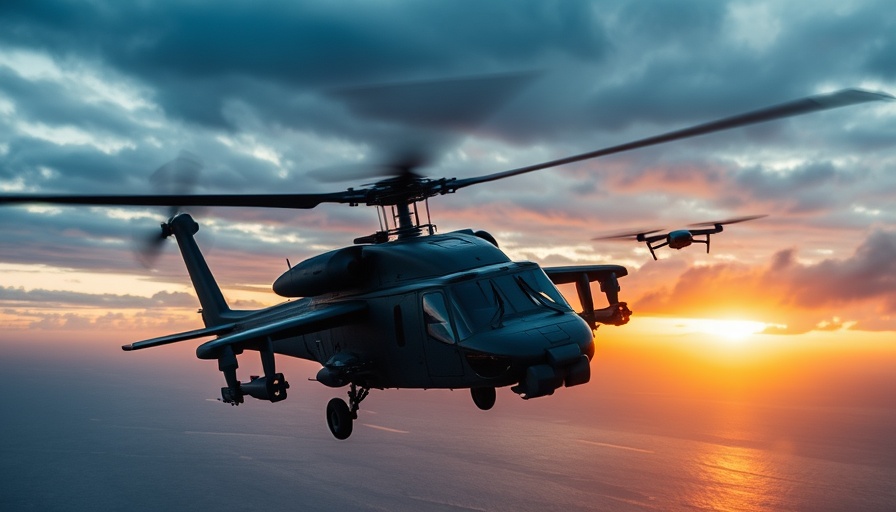
A New Era for the Black Hawk: Lockheed Martin Takes Charge
In a significant advancement for military aviation, Sikorsky, a subsidiary of Lockheed Martin, has been awarded a $43 million contract by the U.S. Army aimed at modernizing the iconic Black Hawk helicopter. This initiative is part of a broader strategy to enhance the aircraft's capabilities, particularly in integrating unmanned aerial systems (UAS) and other advanced technologies, making it a more formidable asset in military operations.
Transforming the Black Hawk with a Digital Backbone
The modernization strategies outlined in the contract are set to leverage model-based systems engineering (MBSE) to create a digital thread that improves design, testing, and maintenance efficiencies. The introduction of a digital backbone is pivotal; it supports a Modular Open System Approach (MOSA), setting the stage for rapid adaptations to meet evolving mission requirements. Such enhancements not only promise improved performance but also the integration of critical technologies like AI and autonomy, which are essential for tomorrow's battlefield.
Strategic Advantages in Military Operations
"Sikorsky is ready to implement new technologies that will strengthen the combat-proven Black Hawk helicopter," stated Hamid Salim, Vice President of Army and Air Force Systems at Sikorsky. The ability to deploy UAS alongside upgraded aerial capabilities could dramatically enhance the effectiveness of Army missions in regions such as the Indo-Pacific, where operational versatility is crucial. By equipping the Black Hawk with launched effects, ground forces can gain strategic advantages in reconnaissance and tactical responses.
Field-Ready Innovations for Immediate Impact
As Sikorsky continues to innovate, it is already deploying enhancements that improve current Black Hawks. The introduction of upturned exhaust systems II kits translates to better infrared suppression and weight reduction, along with improved reliability and maintainability. These advancements showcase Sikorsky's commitment to delivering not just future-ready helicopters but also enhancing existing fleet capability.
The Bigger Picture: Military Preparedness and Innovation
The Black Hawk modernization efforts come at a time when military forces worldwide are re-evaluating their technological approaches amidst rapidly changing global threats. As the U.S. Army focuses on integrating new technologies into its operations, the strategic importance of maintaining a robust and versatile helicopter fleet becomes evident. This infusion of modern technology ensures that the Black Hawk continues to be a critical component in U.S. defense strategies for years to come.
Looking Ahead: What This Means for the Future
The future of military aviation resides in the blend of traditional helicopter capabilities and cutting-edge technology. The Black Hawk modernization initiative not only revitalizes an established aircraft but also sets a precedent for future military aviation projects. As these technologies are successfully integrated, they promise to change the dynamics of air support in combat scenarios, making missions safer and more effective for soldiers on the ground.
As Sikorsky works hand-in-hand with suppliers and military leaders, the vision of a modernized Black Hawk becomes clearer—offering enhanced capabilities, improved safety, and extending the operational lifespan of one of the military's most beloved helicopters.
 Add Row
Add Row  Add
Add 




Write A Comment